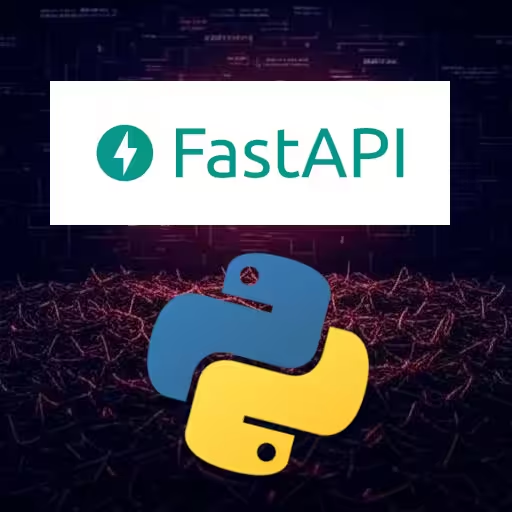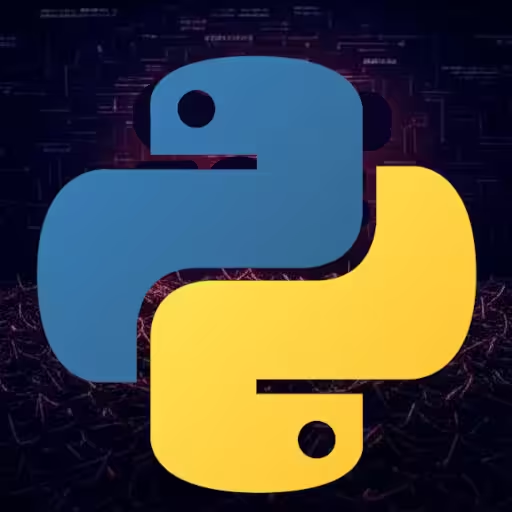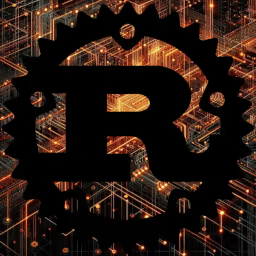Full Stack Developer Salary Guid: Roadmaps, Salaries, Skills, and Hiring
Full stack developers are versatile engineers capable of building both frontend and backend systems. From handling APIs and databases to crafting responsive UIs, they bridge the gap between design and infrastructure. In this guide, we'll break down trending full stack keywords—from salary and roadmaps to freelance options and hiring strategies.
Full Stack Developer: A Well-Rounded Role in Modern Web Teams
A full stack developer can independently build, maintain, and scale web applications. This includes designing databases, implementing backend logic, and building UIs. Their role is crucial in startups and product teams that value generalists over specialists.
Technologies might include:
- Frontend: React, Vue, Angular
- Backend: Express, Flask, FastAPI
- Databases: MongoDB, PostgreSQL
Full Stack: What It Really Means in 2025
The term "full stack" refers to working on both client-side and server-side logic. A developer doesn't need to master everything, but should be comfortable switching between layers of the app. A true full stack developer can debug database issues, write REST endpoints, and style a responsive UI.
Average IT Professional Salaries in the U.S. (2025)
As of July 2025, IT professionals in the United States earn an average annual salary of approximately $84,000, which equates to roughly $40 per hour. Earnings typically fall between $70,000 (10th percentile) and $101,000 (90th percentile), with most professionals earning between $77,000 and $93,000.
Several factors influence compensation, including experience, technical specialization, industry, and employer size. These variables create a broad salary spectrum and are important to consider when evaluating IT roles or negotiating pay.
Full Stack Developer Pay: 2025 Market Breakdown
Here's a breakdown of full-stack developer salaries by region in the USA:
| Region | Experience Level | Salary Range | Notes |
|---|---|---|---|
| US (General) | Junior to Senior | $80,000 - $150,000 | Depends on city, stack, and industry |
| US - San Francisco / NYC | Mid to Senior | $120,000+ | High demand + high cost of living |
| US - Midwest | Junior to Mid | $70,000 - $90,000 | Lower COL, fewer startups |
| US - Austin | Senior | $150,000 | Fast-growing hub, competitive salaries |
| UK (General) | Junior to Senior | GBP50,000 - GBP100,000 | Varies by region |
| UK - London | Mid to Senior | GBP85,000 - GBP100,000 | Highest UK salaries; \~GBP2,412 extra in potential annual earnings |
| UK - Soho | Junior to Mid | GBP55,000 - GBP60,000 | Slightly below London proper |
| UK - Other (e.g. Scotland, Wales) | Junior to Mid | GBP40,000 - GBP55,000 | Lower demand and cost of living |
Note: Only ~53% of full stack roles are remote. Geographic location still matters, especially in tech hubs.
Full stack pay often scales with experience, DevOps knowledge, or cloud infrastructure exposure (e.g., AWS, Docker, Terraform). Remote and international roles may vary widely.
Java Full Stack Developer: A Specific Tech Stack Path
Java full stack developers specialize in building robust, scalable applications using Java or Spring Boot on the backend, paired with modern frontend frameworks like Angular or React. This stack is a mainstay in enterprise software development due to its performance, security, and long-term maintainability.
Common Stack for Java Full Stack Roles
- Backend: Java, Spring Boot
- Frontend: Angular, React
- Build Tools: Maven, Gradle
- Database: PostgreSQL, MySQL, or Oracle
- DevOps: Jenkins, Docker, Kubernetes
Salary Expectations in 2025
According to Glassdoor salary data for Full Stack Java Developers, total compensation ranges from $105,000 to $164,000 per year, with a median of $131,000. The base salary typically falls between $93,000 and $141,000, with additional pay (bonuses, stock, etc.) contributing $12,000 to $22,000 annually.
These figures reflect the high demand for developers who can handle complex enterprise systems, especially those integrating legacy backends with modern frontend experiences.
Why Java Full Stack Is Still in Demand
Java full stack developers are particularly valuable in industries like finance, insurance, telecom, and government, where stability, compliance, and performance are critical. Java is still a dominant force in building banking platforms, enterprise resource planning (ERP) systems, and web-based internal dashboards. It also remains foundational for Android app development, and developers familiar with both client-side and server-side Java architectures are often tapped for full-cycle application modernization projects.
This specialization continues to offer strong career prospects, especially for those who pair their backend expertise with modern frontend frameworks and cloud-native deployment skills.
Full Stack Developer Careers: Opportunities and Growth
Career paths for full stack developers include:
- Tech Lead or Engineering Manager
- CTO at a startup
- Product-focused individual contributor
- Specialist (frontend/backend) with full stack fluency
Being full stack opens more doors than single-skill roles, especially in small to midsize teams.
Full Stack Developer Jobs: Where to Find Opportunities
Top job boards include:
- LinkedIn — Most active recruiter traffic
- Wellfound (formerly "AngelList") — Great for startups
- RemoteOK Jobs — Global freelance and remote gigs
- Hacker News Jobs — Minimal listings, high quality
Use search terms like full stack typescript, full stack react, or full stack lamp to filter niche postings.
Full Stack Developer Positions: Titles and Variants
You might see these titles in job listings:
- Full Stack Engineer
- Web Developer (Full Stack)
- Software Engineer (Frontend/Backend emphasis)
- Product Engineer
The core expectation is that you can touch both backend and frontend layers—even if you specialize in one.
Google IT Support Salaries and the Value of the Google IT Support Professional Certificate
If you're aiming for a high-paying role in IT support, Google's compensation data makes a compelling case. According to recent figures (as of July 28, 2025), IT Support positions at Google range from $142K at entry level (L3) to $350K at senior levels (L6). The median total compensation sits at $255K, which includes base salary, annual stock grants, and performance bonuses.
Compensation Breakdown by Level
| Level | Total Comp | Base Salary | Stock (Annual) | Bonus |
|---|---|---|---|---|
| L3 | $142K | $105K | $21.5K | $15K |
| L4 | $193K | $122K | $48.5K | $22.5K |
| L6 | $350K | $214K | $93.5K | $42K |
The Role of the Google IT Support Professional Certificate
Breaking into IT support roles at top-tier companies like Google often starts with foundational knowledge—and that's exactly what the Google IT Support Professional Certificate is designed to deliver. This online program covers five core areas essential for any aspiring IT support specialist:
- Technical Support Fundamentals
- The Bits and Bytes of Computer Networking
- Operating Systems
- System Administration and IT Infrastructure Services
- IT Security: Defense Against the Digital Dark Arts
While the certificate alone won't guarantee you a job, Google reports that 75% of graduates experience a positive career shift within six months, which could include a promotion, raise, or new job entirely. It's a recognized credential that opens doors—especially at companies like Google, Walmart, Hulu, Sprint, and Bank of America, all of which acknowledge the cert.
Career Outlook
Completing the program can help you build the foundational knowledge to pursue roles in IT support, help desk analysis, systems administration, or technical support engineering. It's a solid starting point for a long-term IT career, especially if you're looking to level up into infrastructure, cybersecurity, or cloud services later.
Conclusion
In 2025, being a full stack developer—or entering any technical IT role—requires more than just technical fluency across the stack. It means having the ability to take ownership of a problem, design a solution end-to-end, and deliver working software in fast-paced, cross-functional environments.
The compensation trends are clear: full stack developers and IT professionals are commanding strong salaries across regions, with top-tier employers like Google offering six-figure packages even at junior levels. But breaking into these roles—and leveling up—takes more than code.
Whether you're aiming for full stack roles, technical support engineering, or infrastructure and DevOps, a solid mix of hands-on experience, certification, and market-aligned skills is essential. Programs like the Google IT Support Professional Certificate give aspiring professionals a credible starting point, while real-world projects and modern frameworks (React, Node, Docker, etc.) help full stack developers stand out.
For employers, the competition for skilled engineers is intense. Hiring strategies must consider geographic pay differences, remote flexibility, and the growing importance of continuous learning and specialization.
Ultimately, the most valuable professionals in 2025 will be those who combine technical breadth, communication skills, and a mindset of execution. Whether you're hiring, pivoting careers, or scaling your freelance work, invest in learning paths that stay aligned with the shifting tech landscape—and focus on shipping.












